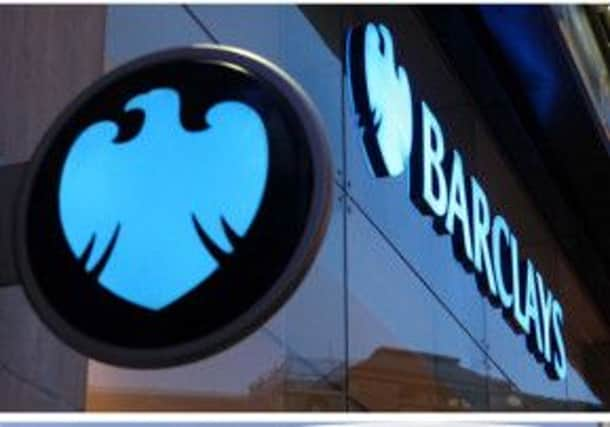Banks told to raise billions more


The Prudential Regulation Authority (PRA) confirmed that Barclays, Lloyds Banking Group, Royal Bank of Scotland, Nationwide building society and The Co-operative Bank must take action to boost their balance sheets after uncovering the shortfall.
The institutions have already discussed plans with the PRA to tackle more than half – £13.7bn – of the gap in their capital cushions, but they must stump up the remainder by the end of this year or early next.
Advertisement
Hide AdAdvertisement
Hide AdThe total combined shortfall is the amount banks need to raise in order to ensure their balance sheets are healthy enough to withstand future financial shocks, and prevent a repeat of the banking meltdown in 2008.
At the end of 2012, Barclays faced a £3bn capital shortfall, while state-backed banks RBS and Lloyds needed to raise £13.6bn and £8.6bn respectively – accounting for more than 90 per cent of the overall black hole between them.
Nationwide Building Society was found to be £400m shy, while it has already been announced that the The Co-operative must stump up £1.5bn.
HSBC, Standard Chartered and Santander UK were given a clean bill of health.
Advertisement
Hide AdAdvertisement
Hide AdThe PRA said that after taking account of plans to fill the gap, Lloyds still needs to raise £7bn, RBS £3.2bn and Barclays £1.7bn.
Measures to bolster the Co-op Bank’s capital reserves were announced earlier this week, with bondholders forced to take losses on their investment as part of a complex “bail-in’’ due to happen in October, which will result in a stock market listing for the UK’s biggest mutual.
Nationwide said its “modest” shortfall was already accounted for in its 2013 financial plan.
But the PRA said Nationwide and Barclays must also raise additional capital to reduce their leverage and must submit their proposals by the end of the month.
Advertisement
Hide AdAdvertisement
Hide AdBarclays, Lloyds and RBS said they were confident in their ability to meet the PRA’s requirements.
The PRA said it has asked firms to ensure that all plans to address shortfalls do not reduce lending to the real economy, but there are fears the tough rules will hamper their ability to lend at a crucial time for the wider economic recovery.
State-backed Lloyds and RBS already confirmed last month that they would not need to tap investors for extra money to shore up their finances.
RBS, which has by far the biggest capital gap, said actions being taken would reduce its capital shortfall to £400m by the end of the year, adding it aimed to resolve the remainder within the first quarter of next year.
Advertisement
Hide AdAdvertisement
Hide AdLloyds said the PRA’s data did not take into account recent action taken to boost its capital, claiming it had a further £2.8bn to raise, which it aims to achieve through profit growth and asset sales.
Barclays said it was “confident” of boosting its capital by the end of the year and would not need to make a cash-call to investors.
The figures will increase pressure on RBS, which is 81 per cent-owned by the State following its bailout in 2008, as it faces the threat of being split into a “good” bank and a “bad” bank.
Chancellor George Osborne confirmed in his annual Mansion House speech on Wednesday that he has ordered an urgent review, to report in the autumn, into the possibility of breaking up RBS to separate out toxic assets and risky loans from parts of the business which support the economy.